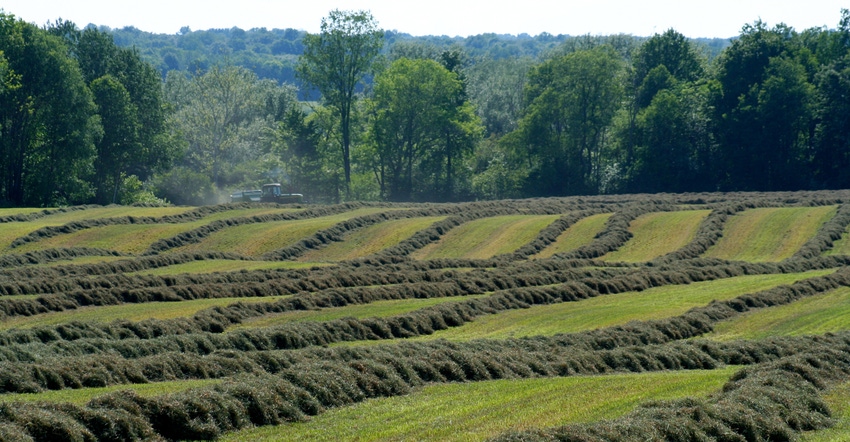October 15, 2018

Fall is an important time to ensure hayfields are properly managed. Pay attention to details to ensure your fields survive through the winter.
Penn State Cooperative Extension has five steps you can take to ensure forage stand longevity:
Don’t cut too low for overwintering
Regardless of whether the hayfield is grass or legumes, residual height is most important when talking about last cutting.
Ensuring proper residual height will allow the forages adequate leaf material to photosynthesize and regrow top growth, as well as store carbohydrates at the base of the plant to overwinter.
Grasses should not be cut lower than 4 inches in the fall, but a residual height of 5 inches or greater would be preferred.
Cut alfalfa long before first frost
The weather forecast shows temperatures getting much cooler this week across the region.
Historically, it is recommended that the final cutting of alfalfa be removed no later than four to six weeks before the first killing frost. This helps ensure plants have adequate time to regrow and store necessary nutrients to over-winter and begin growth in the spring.
But more winter-hardy varieties of alfalfa are now available, and producers are starting to take their final cuttings later into the season.
Cut older stands first
Alfalfa stand age is also indicative of whether a later cutting should be removed. Typically, older stands of alfalfa are more prone to winterkill and should not be mowed past the recommended four-to-six-week “critical period” before a killing frost.
If the alfalfa stand has not been allowed to flower at least once during the growing season, there is a much higher risk for winterkill. Therefore, it should not be harvested later.
Later cuttings may affect spring growth
Fall cuttings of alfalfa should have no less than a 4-inch stubble height to ensure enough plant material is present to photosynthesize and rebuild carbohydrate stores for over-wintering.
It is important to remember that if you’re taking a later cutting, spring yields may suffer, especially with the first cutting. So, when deciding whether or not it is worth it for your operation, the benefits need to be weighed with the risks.
Apply lime for soil pH
In both grass and legume hayfields, fall is an ideal time to apply lime if the soil pH is not ideal for the desired crop.
The weather patterns throughout the winter allow lime to neutralize the soil during the nongrowing season, in turn resulting in a less acidic pH in the spring during the growing season.
A current soil test is the best way to determine if and how much lime is recommended for a hayfield.
Source: Penn State Cooperative Extension
You May Also Like




